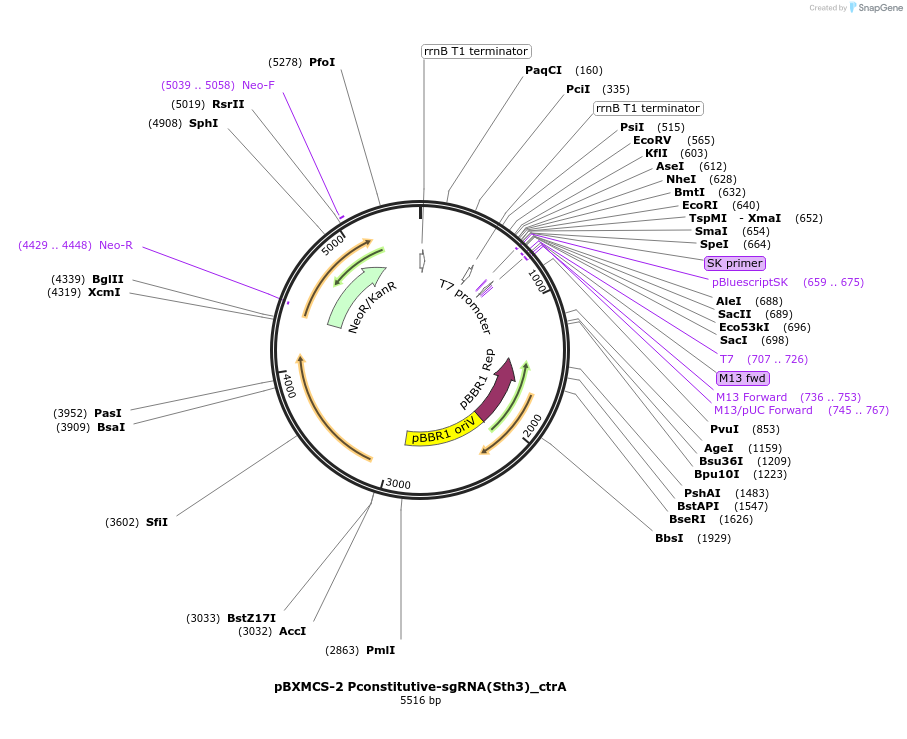pBXMCS-2 Pconstitutive-sgRNA(Sth3)_ctrA
(Plasmid
#133339)
-
Purposefor constitutive expression of a single guide RNA from Streptococcus thermophilus #3 with a seed region that targets ctrA gene's promoter from Caulobacter crescentus
-
Depositing Lab
-
Sequence Information
Ordering
| Item | Catalog # | Description | Quantity | Price (USD) | |
|---|---|---|---|---|---|
| Plasmid | 133339 | Standard format: Plasmid sent in bacteria as agar stab | 1 | $89 | |
Backbone
-
Vector backbonepBXMCS-2
- Backbone size w/o insert (bp) 5287
- Total vector size (bp) 5516
-
Modifications to backbonexylR operator removed
-
Vector typeCRISPR
Growth in Bacteria
-
Bacterial Resistance(s)Kanamycin, 50 μg/mL
-
Growth Temperature37°C
-
Growth Strain(s)Top10
-
Copy numberHigh Copy
Gene/Insert
-
Gene/Insert namesgRNA_ctrA
-
gRNA/shRNA sequencectrA
-
SpeciesStreptococcus thermophilus
- Promoter constitutive
Cloning Information
- Cloning method Gibson Cloning
- 5′ sequencing primer TCCTGATCCTCGCCCGAAAC
- 3′ sequencing primer TTTTCCCAGTCACGACGTTG
- (Common Sequencing Primers)
Resource Information
-
Supplemental Documents
-
A portion of this plasmid was derived from a plasmid made byJeremy M. Rock "Programmable transcriptional repression in mycobacteria using an orthogonal CRISPR interference platform" Nature microbiology 2017
Terms and Licenses
-
Academic/Nonprofit Terms
-
Industry Terms
- Not Available to Industry
Trademarks:
- Zeocin® is an InvivoGen trademark.
These plasmids were created by your colleagues. Please acknowledge the Principal Investigator, cite the article in which the plasmids were described, and include Addgene in the Materials and Methods of your future publications.
-
For your Materials & Methods section:
pBXMCS-2 Pconstitutive-sgRNA(Sth3)_ctrA was a gift from Michael Laub (Addgene plasmid # 133339 ; http://n2t.net/addgene:133339 ; RRID:Addgene_133339) -
For your References section:
A CRISPR Interference System for Efficient and Rapid Gene Knockdown in Caulobacter crescentus. Guzzo M, Castro LK, Reisch CR, Guo MS, Laub MT. mBio. 2020 Jan 14;11(1):e02415-19. doi: 10.1128/mBio.02415-19. 10.1128/mBio.02415-19 PubMed 31937638



